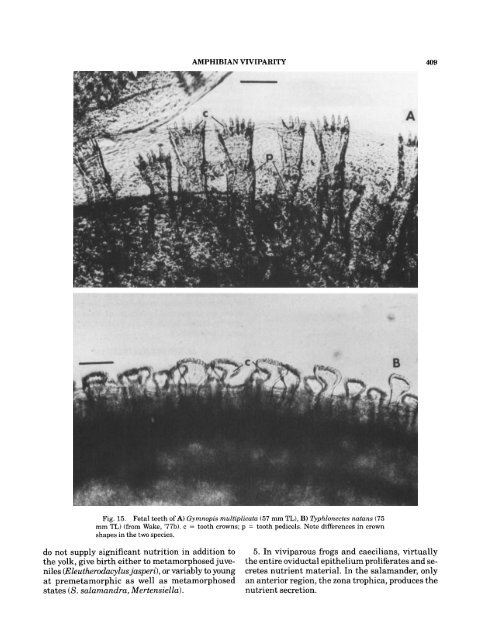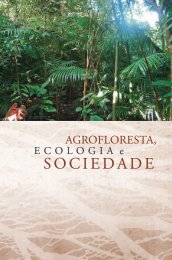Evolution of Oviductal Gestation in Amphibians
Evolution of Oviductal Gestation in Amphibians
Evolution of Oviductal Gestation in Amphibians
You also want an ePaper? Increase the reach of your titles
YUMPU automatically turns print PDFs into web optimized ePapers that Google loves.
AMPHIBIAN VIVIPARITY 409<br />
Fig. 15. Fetal teeth <strong>of</strong> A) Gymnopis multiplicata (57 mm TL), B) Typhlonectes natans (75<br />
mm TL) (from Wake, '77b). c = tooth crowns; p = tooth pedicels. Note differences <strong>in</strong> crown<br />
shapes <strong>in</strong> the two species.<br />
do not supply significant nutrition <strong>in</strong> addition to<br />
the yolk, give birth either to metamorphosed juveniles<br />
(Eleutherodacylusjer~), or variably t~ young<br />
at premetamorphic as well as metamorphosed<br />
states (S. salamandra, MertensieZla).<br />
5. In viviparous frogs and caecilians, virtually<br />
the entire oviductal epithelium proliferates and se-<br />
cretes nutrient material. In the salamander, only<br />
an anterior region, the zona trophica, produces the<br />
nutrient secretion.






